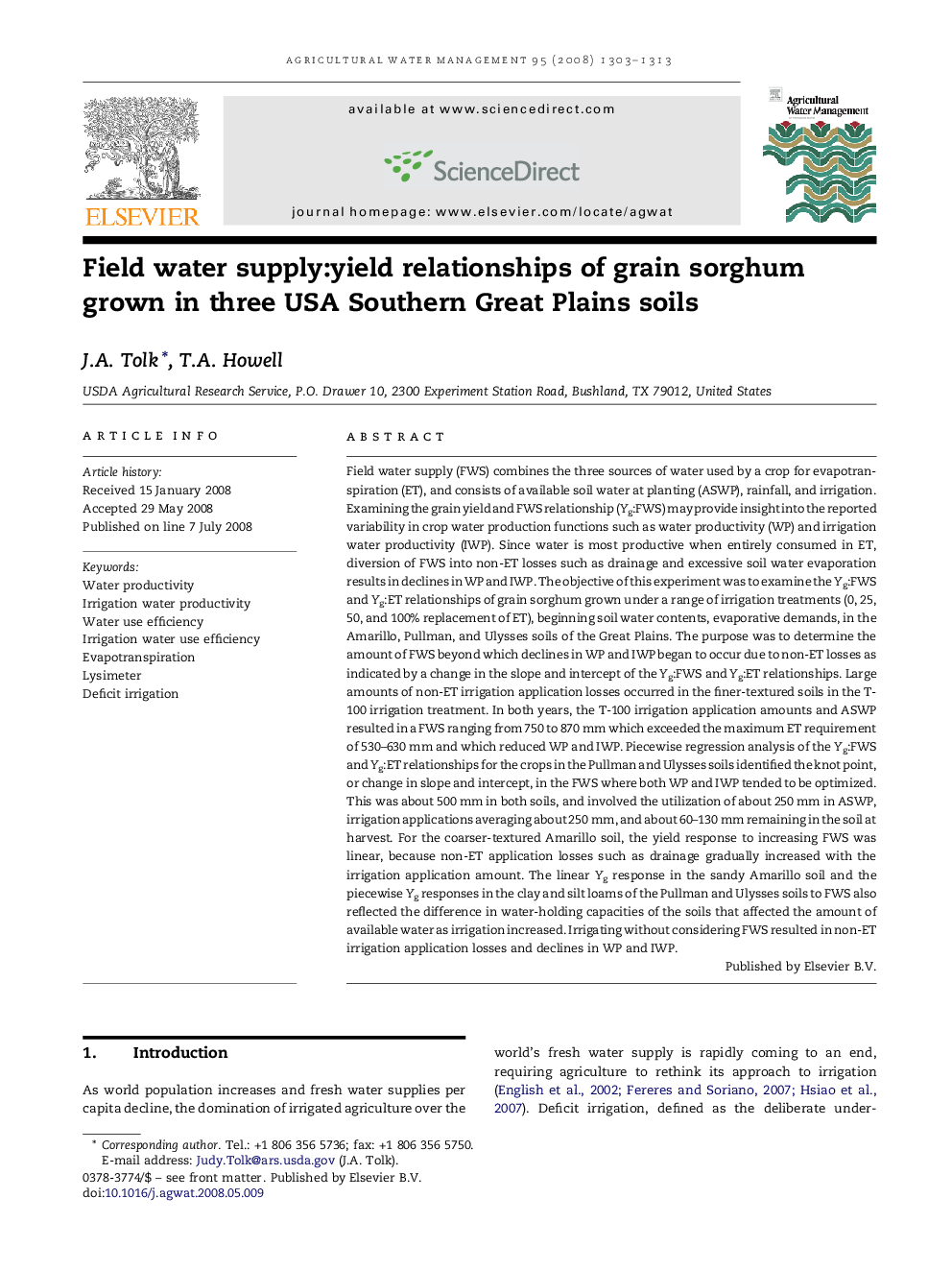| کد مقاله | کد نشریه | سال انتشار | مقاله انگلیسی | نسخه تمام متن |
|---|---|---|---|---|
| 4480066 | 1316472 | 2008 | 11 صفحه PDF | دانلود رایگان |

Field water supply (FWS) combines the three sources of water used by a crop for evapotranspiration (ET), and consists of available soil water at planting (ASWP), rainfall, and irrigation. Examining the grain yield and FWS relationship (Yg:FWS) may provide insight into the reported variability in crop water production functions such as water productivity (WP) and irrigation water productivity (IWP). Since water is most productive when entirely consumed in ET, diversion of FWS into non-ET losses such as drainage and excessive soil water evaporation results in declines in WP and IWP. The objective of this experiment was to examine the Yg:FWS and Yg:ET relationships of grain sorghum grown under a range of irrigation treatments (0, 25, 50, and 100% replacement of ET), beginning soil water contents, evaporative demands, in the Amarillo, Pullman, and Ulysses soils of the Great Plains. The purpose was to determine the amount of FWS beyond which declines in WP and IWP began to occur due to non-ET losses as indicated by a change in the slope and intercept of the Yg:FWS and Yg:ET relationships. Large amounts of non-ET irrigation application losses occurred in the finer-textured soils in the T-100 irrigation treatment. In both years, the T-100 irrigation application amounts and ASWP resulted in a FWS ranging from 750 to 870 mm which exceeded the maximum ET requirement of 530–630 mm and which reduced WP and IWP. Piecewise regression analysis of the Yg:FWS and Yg:ET relationships for the crops in the Pullman and Ulysses soils identified the knot point, or change in slope and intercept, in the FWS where both WP and IWP tended to be optimized. This was about 500 mm in both soils, and involved the utilization of about 250 mm in ASWP, irrigation applications averaging about 250 mm, and about 60–130 mm remaining in the soil at harvest. For the coarser-textured Amarillo soil, the yield response to increasing FWS was linear, because non-ET application losses such as drainage gradually increased with the irrigation application amount. The linear Yg response in the sandy Amarillo soil and the piecewise Yg responses in the clay and silt loams of the Pullman and Ulysses soils to FWS also reflected the difference in water-holding capacities of the soils that affected the amount of available water as irrigation increased. Irrigating without considering FWS resulted in non-ET irrigation application losses and declines in WP and IWP.
Journal: Agricultural Water Management - Volume 95, Issue 12, December 2008, Pages 1303–1313